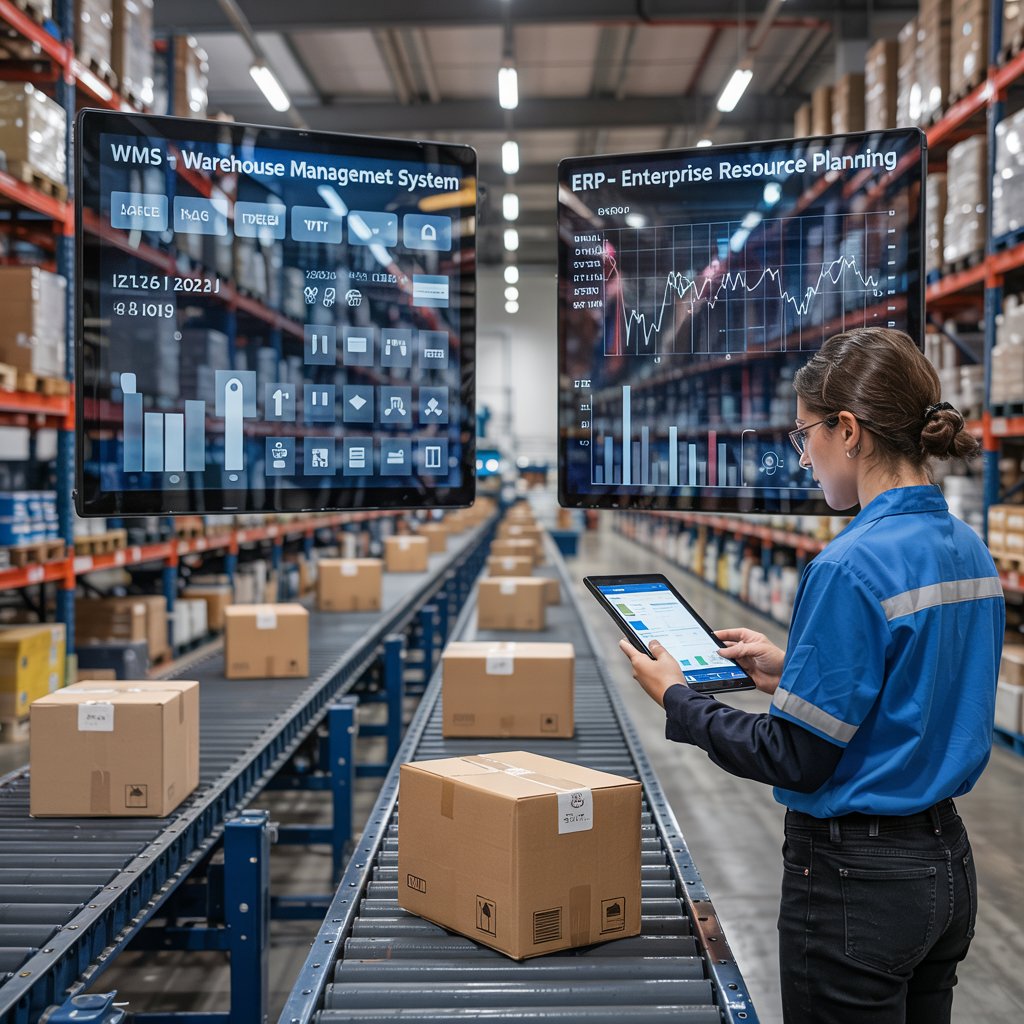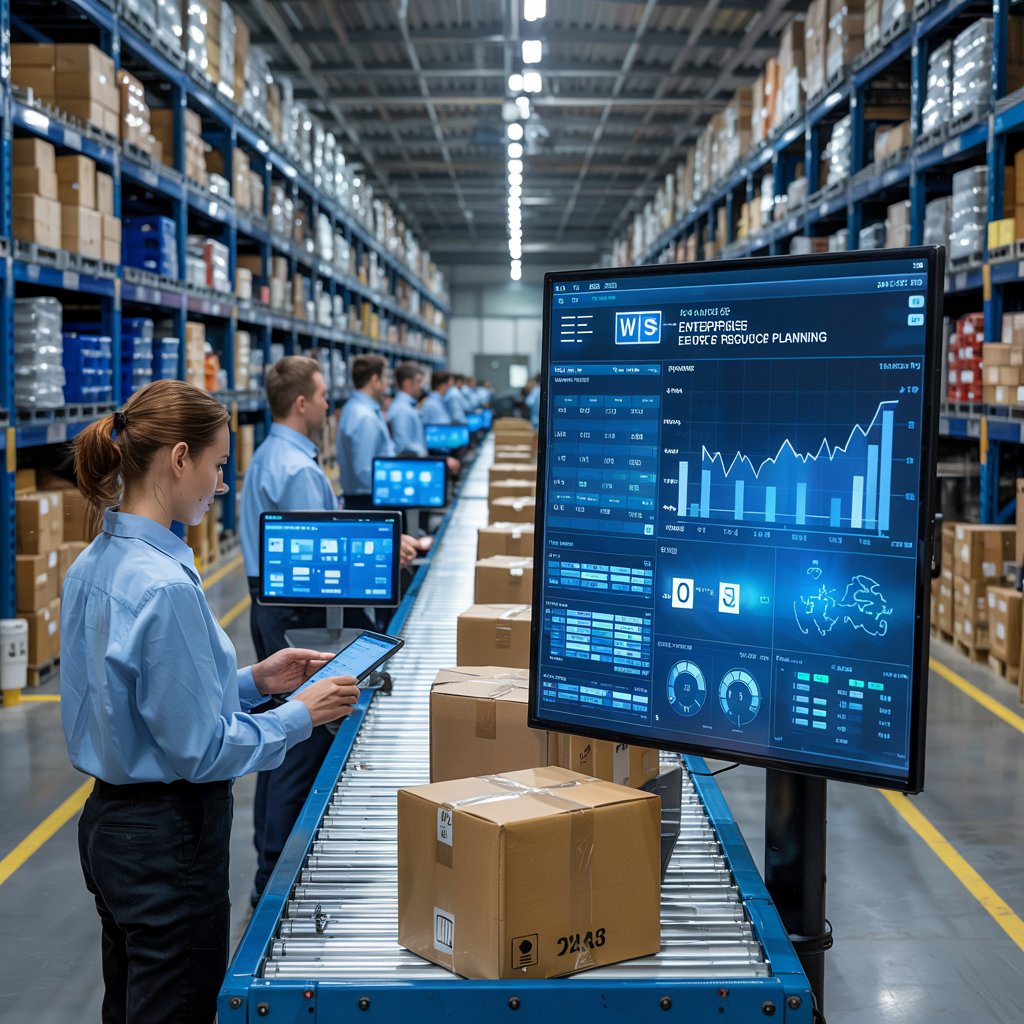WMS vs. ERP: Differences in Warehouse Management for Logistics

🚛 What is a Warehouse Management System (WMS)?
A Warehouse Management System (WMS) is a software solution that’s purpose-built to optimize warehouse operations. From inventory tracking and real-time location management to order picking and shipping, WMS tools are laser-focused on warehouse-specific tasks.
Key Features of WMS:
- Real-time inventory visibility 📦
- Barcode/RFID scanning
- Slotting optimization
- Order picking, packing, and shipping workflows
- Labor and task management
- Integration with transportation management systems (TMS)
WMS systems like Linbis are designed to make warehousing smarter and faster, improving accuracy and reducing operational costs.
🏢 What is an Enterprise Resource Planning (ERP) System?
An ERP system is an all-in-one solution that integrates multiple business processes—from finance, HR, sales, and procurement, to inventory and warehousing.
Key Features of ERP:
- Centralized business data
- Financial management and accounting
- Human resources and payroll
- Procurement and supplier management
- Basic inventory and order tracking
- Reporting and analytics across departments
While ERP systems offer a broad view of business operations, they often lack the depth and granularity required for complex warehouse tasks.

WMS vs ERP for warehouse: A Side-by-Side Comparison
Feature | WMS | ERP |
Core Focus | Warehouse operations | Enterprise-wide processes |
Inventory Tracking | Real-time, detailed | Often batch-based or delayed |
Shipping Integration | Advanced (carrier integration, label printing) | Basic |
Order Fulfillment | Optimized workflows | General support |
Customization for Logistics | High | Moderate |
Implementation Time | Faster | Typically longer |
Cost | Lower upfront | Higher TCO (Total Cost of Ownership) |
🧭 When Should You Choose a WMS?
Opt for a WMS if:
- Your business relies heavily on warehousing and fulfillment.
- You need real-time control and accuracy in your warehouse.
- You’re looking to scale logistics operations without growing complexity.
- You already have ERP software and want to augment it with warehouse-specific capabilities.
Linbis WMS, for example, offers powerful warehouse functionality tailored for freight forwarders, 3PLs, and logistics providers. It’s especially effective when agility and fast implementation matter.

🧩 When is ERP the Right Fit?
Choose an ERP system if:
- You want a single system to manage your entire business.
- Your warehouse operations are simple and don’t require fine-tuned automation.
- You’re prioritizing financial reporting and cross-department visibility over warehouse specialization.
However, many companies find that ERP’s warehousing features are too generic. In those cases, they often integrate a WMS with their ERP for best-in-class functionality.
🤝 Can You Use Both?
Absolutely. In fact, the combination of ERP and WMS is often the best of both worlds. ERP takes care of your company’s financials and customer relationships, while the WMS ensures that products are stored, picked, and shipped with precision.
Many logistics businesses implement WMS vs ERP for warehouse systems like Linbis alongside ERP platforms such as SAP, Oracle, or NetSuite—creating a seamless flow of data between warehouse and back office.

💡 Final Thoughts WMS vs ERP for warehouse: Tailor Your Tech to Your Needs
The choice between WMS and ERP comes down to what you need most:
- Deep control over warehouse operations? Go with a specialized WMS.
- Comprehensive business oversight? ERP may be the right fit.
- Want both? Look for integration-friendly WMS platforms.
As logistics grows more complex, the tools you choose will shape your ability to stay ahead. Whether you’re scaling fulfillment or streamlining operations, choosing the right system makes all the difference.
